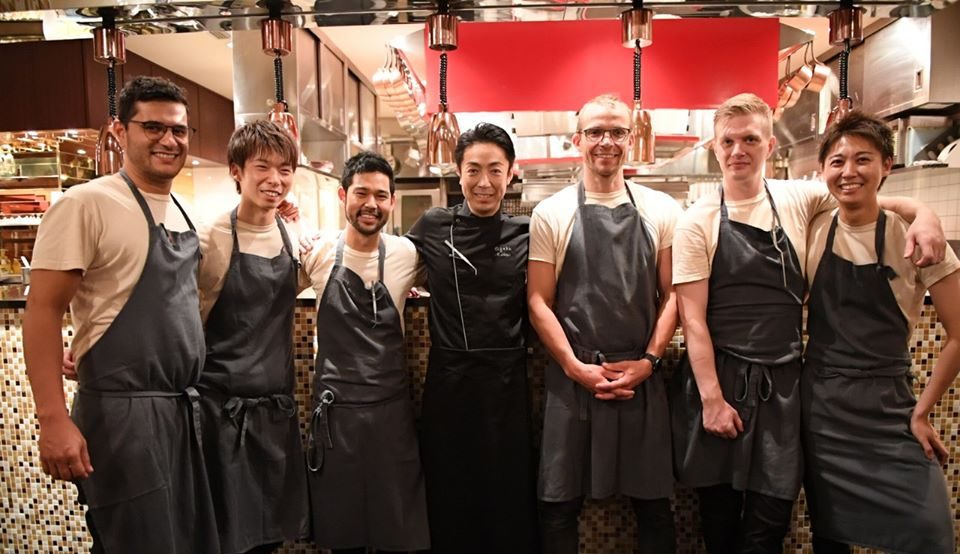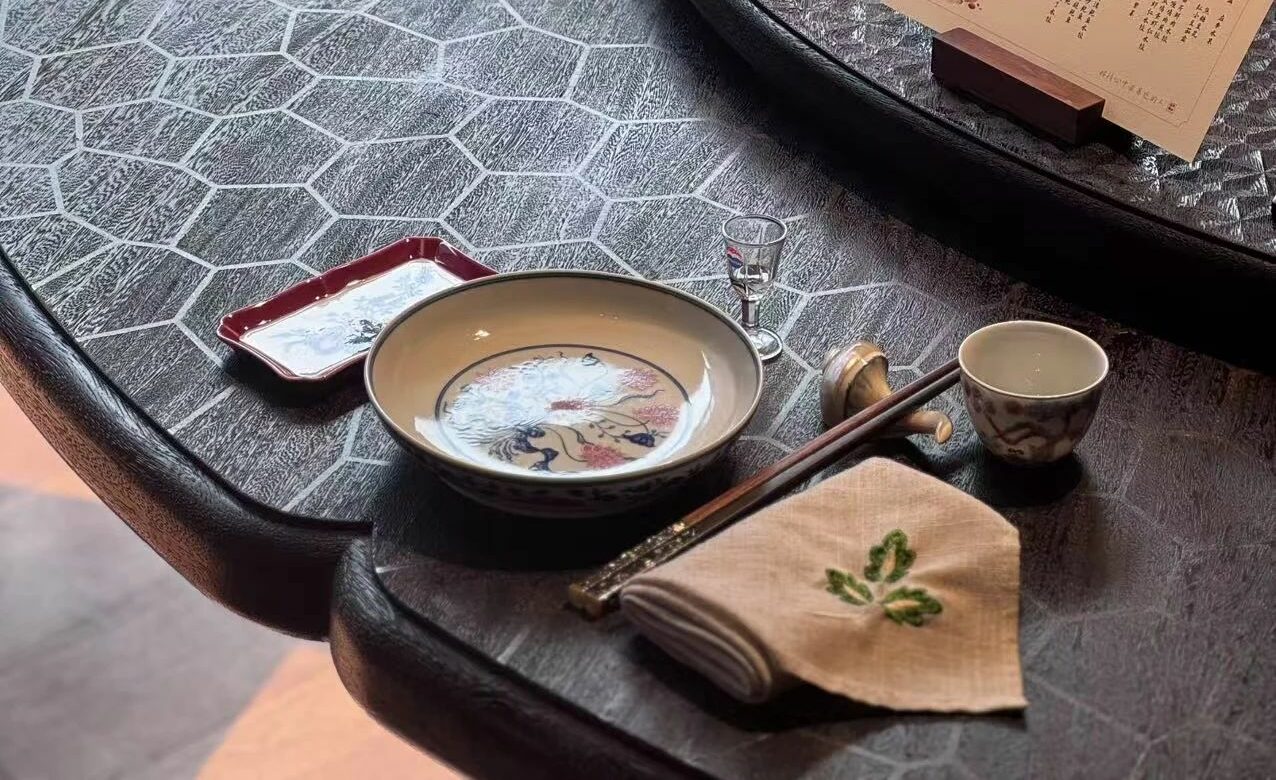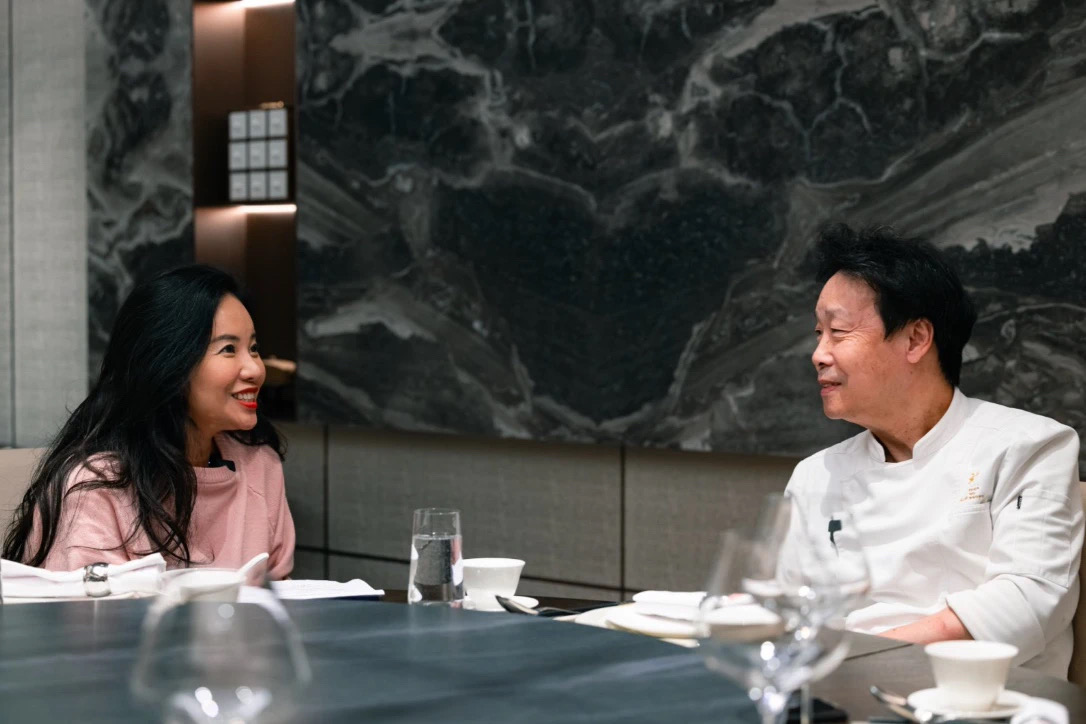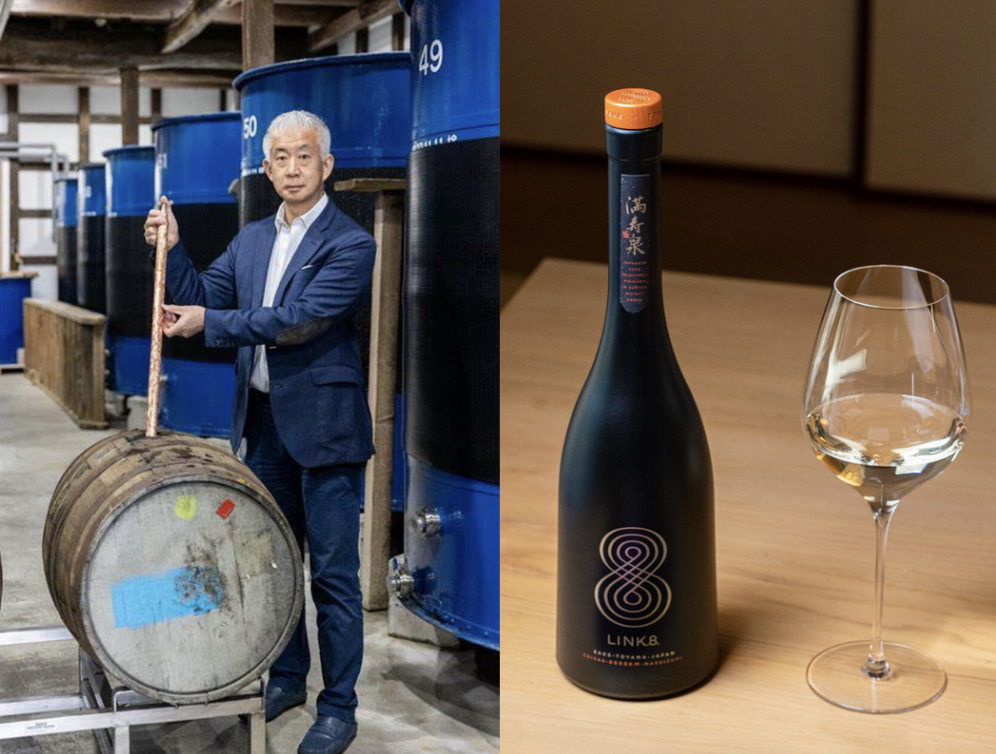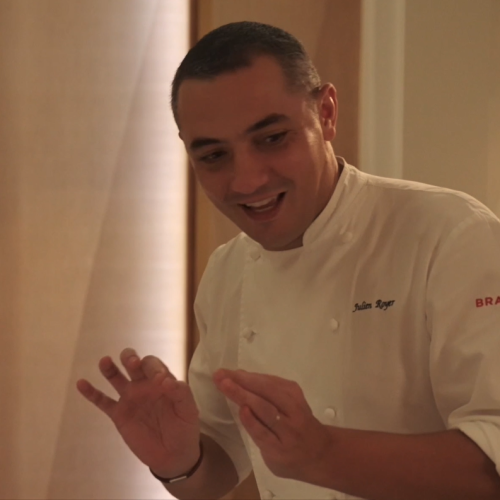Author: Jocelyn Chen
Editor: Bonnie Hu
Photo from Restaurant/Jocelyn Chen
INUA Enters Japanese Market
Grand Maison Tokyo, a recent hit Japanese tv series starring Takuya Kimura, depicts a Japanese chef dreaming to create the world’s greatest three Michelin star restaurant. The show has arosen much interest in the Asian food industry. Thomas Frebel, who previously known as Noma’s the head of R&D and now opens his own restaurant INUA in Tokyo, which has received two Michelin stars, has stepped into the spotlight because of the show, to which Frebel served as a consultant and in which INUA-exclusive delicacies appear as dishes served in Gaku, a rival of the TV series’ namesake restaurant.
Five years ago when Thomas Frebel, Noma’s the head of R&D, was conducting the pop-up experiment led by Noma’s chef René Redzepi in Mandarin Oriental, Tokyo, he felt an unexpected chemistry between himself and Japan in just five weeks. He was pretty sure he was in love with the very country and decided to start his own business there.
Visit INUA kitchen
 INUA chef Thomas Frebel, credit: Jason Loucas
INUA chef Thomas Frebel, credit: Jason Loucas
His own restaurant INUA opened last year with financial support from Kadokawa Shoten, a famous publisher in Tokyo. And with only one year passing, INUA now has received the Michelin two-star accolade, dispelling the doubt in the culinary circle whether Nordic cuisine would be accepted by the Japanese market or not.
I was fortunate to pay this establishment a visit this year, and even more lucky to have sensed from it an almost perfect fusion of the Nordic spirit and the Japanese culture.
 credit: Jason Loucas
credit: Jason Loucas
Born and raised in Magdeburg, Germany, Thomas Frebel began his culinary career at the age of 16, and later worked alongside chef René Redzepi in the legendary restaurant Noma for ten years. During this period he once served as a R&D director, assisting René in menu design and participating in Noma’s research and development for several overseas branches.
 credit: Jason Loucas
credit: Jason Loucas
Now, he is dedicated to his own business, leading a group of 30-year-olds in a Scandinavian interpretation of Japanese seasonal ingredients that pays homage to both roots and pursuits of the Nordic cuisine.
 credit: Jason Loucas
credit: Jason Loucas
A Blend of Nordic and Japanese Styles
Last year I was not able to attend the grand opening of INUA for failure to make a reservation. It was not until this year when the TV series Grand Maison Tokyo went on the air. This time I booked a table several weeks in advance, visiting there just before the launch of Michelin Guide Tokyo.
 Environment of INUA, credit: Aoki Michinori
Environment of INUA, credit: Aoki Michinori
This particular restaurant, which is located in a commercial building near Iidabashi, Tokyo, stands 9 floors high and overlooks the Tokyo skyline. As soon as we arrived in the hall, we were shown into the space by an Australian chef. We first passed through a long corridor, which was of a Zen style as was decorated with flowers and plants, giving people a sense of immense space. People can hardly imagine this was in Tokyo, a metropolis known for high land costs. This suggested that the investor Kadokawa Shoten must have invested heavily.
Next, we visited the R&D room. It enjoyed a large space where a lot of fermented ingredients, and a staff dining area – also a standard offering in Noma – can be seen.

 credit: Aoki Michinori
credit: Aoki Michinori
Although its Nordic customized tables and chairs and silk from Kyoto integrated the essence of Northern Europe and Japan, INUA still resembled Noma in terms of the overall spatial design, especially like the Noma 1.0.

 Environment of INUA
Environment of INUA
It is notable that even before its official opening last year, INUA had already been considered Noma’s overseas branch by the culinary circle as a reference to new Nordic cuisine‘s overseas expansion, even now, people still compare it with Noma.
This seemed a natural thing. After all, Frebel had been working at Noma for ten years, and was Noma’s R&D director. Noma does have been written into his DNA. And it was precisely Japan’s similar latitude, culture, and customs to those of Northern Europe that attracted him there to establish INUA.
Local ingredients
Speaking of INUA’ dishes, good things don’t come easy. The mere practice of collecting and using Japanese ingredients in the spirit of Nordic is sufficient to prove it.
This is because Japan is a country that attaches great importance to solar terms. There are not only the four recognized seasons, but also 72 micro seasons. Besides, as it is 3,000 kilometers long from the northernmost tip of Hokkaido to Ishigaki Island, the southernmost end of Okinawa, there are many types of climate found in Japan throughout the year, making the diversity of its natural ingredients and the way they are preserved and prepared possibly much more complicated than in northern Europe.


 INUA ingredients, credit: Jason Loucas
INUA ingredients, credit: Jason Loucas
To find the finest in-season ingredients, more than 30 INUA employees from 15 different countries stand ready to travel all over Japan on their own and consult with locals including farmers and hunters. It is said that before his restaurant opened, Frebel himself had spent half a year walking in Japan looking for suitable ingredients.
 INUA ingredients
INUA ingredients
He once met a supplier from Hokkaido who specialized in kelp for 40 years, leading him to get to know and purchase many different types of kelp, including dry, gelatinous, and viscous, all in diverse colors. On our short-list menu offered in INUA this time, we witnessed various kinds of applications for the different types of kelp, such as the second course seasonal citrus cured with kanzuri, roasted kelp oil, which tasted sour yet sweet.
 various kinds of applications for the different types of kelp
various kinds of applications for the different types of kelp
We were also served with other local Japanese food, like the aged and smoked maitake, braised in a pine dashi with salted sakura. The salted sakura, dried in its nature, got sprinkled over the dish with one making just a crushing motion, adding a strong Japanese flavor and a sense of Zen.

 aged and smoked maitake, braised in a pine dashi with salted sakura
aged and smoked maitake, braised in a pine dashi with salted sakura
As for the fish part, the dish used cooked grouper, which was roasted to the same extent as the roast duck. Crisp as it was, its meat tasted soft and tender. According to the chef, although the fish was grilled on each side for a long time, its meat quality was not affected thanks to its rich fat content. Also topped with smoked oyster fragments and served with kelp salt and whipped cream, this dish offered multiple tasting experiences through an ingenious use of local ingredients, impressing us as a distinctive course.
 Aged kelp grouper with smoked oysters, kelp salt and cream
Aged kelp grouper with smoked oysters, kelp salt and cream
Another local Japanese-style dish I favored featured edamame stew, sake lees and house-made pumpkin seed oil. With somewhat quintessential charm of Japanese, it tasted mellow and healthy, representing the kind of food that Asians may appreciate.
There was also deer that I had been craving since I watched the TV series Grand Maison Tokyo. Its meat, originally from Hokkaido, was pure enough to be free from the fishy taste and appeared even more palatable when served with tender bamboo shoots and flower kimchi.
 Barbecued deer glazed with native magnolia seed, square bamboo shoots and flower kimchi
Barbecued deer glazed with native magnolia seed, square bamboo shoots and flower kimchi
It happened to be a season during which a lot of deer would be consumed, which made the dish a popular seasonal delicacy in INUA.
INUA has been respecting the power of nature, one manifestation of its belief being zero waste of food. And we did feel a sense of sustainability when we were served with bread that was covered with well-done deer back fat.
 Caramelised seaweed mille-feuille
Caramelised seaweed mille-feuille
 blackened barley koji ice cream and pine cones
blackened barley koji ice cream and pine cones
Our dessert consisted of blackened barley koji ice cream and pine cones preserved in honey with olive oil for a refreshing, forest-like taste.
 Japanese sake
Japanese sake
Finally, our menu offered three types of Japanese sake and a caramelized nori pie which combined the sweet taste with the salty one possibly to Asian people’s liking. We also had a big surprise when a server offered us a four-leaf clover-shaped cake while me and my other half were celebrating our birthday there.
 A birthday cake ordered from the restaurant in advance
A birthday cake ordered from the restaurant in advance
Make Nordic Cuisine Popular in Japan
We went to INUA two weeks before it was awarded stars by the Michelin Guide. I had a chance to talk to Frebel, telling him that I came there because of the Japanese TV series Grand Maison Tokyo. He was surprised by the drama’s popularity in China, saying that he worked as its consultant because he wanted to get his restaurant seen and known by more people rather than being drowned in the numerous restaurants in Tokyo.
 group photo of chef Thomas Frebel, INUA team and actor Onoe Kikunotake who played role of Gaku chef Tango Manabu
group photo of chef Thomas Frebel, INUA team and actor Onoe Kikunotake who played role of Gaku chef Tango Manabu
credit:Grand Maison Tokyo official website
We didn’t have much time for in-depth communication since Frebel had to personally oversee each and every dish before it left the kitchen. Despite this, I still believe that with the help of the TV series and two Michelin stars, Thomas Frebel has won himself a spot in the world’s most Michelin starred country.
 chef Frebel supervises in the kitchen
chef Frebel supervises in the kitchen
When analyzing INUA last year, I once remarked that investing in Nordic cuisine may well be a highly risky business in Japan, given the fact that currently only the Swedish three Michelin-starred chef Björn Frantzén who had ensured smooth operation of his Hong Kong-based store Frantzén’s Kitchen achieved his success story of overseas expansion.
 INUA kitchen team
INUA kitchen team
Based on this, INUA really deserves admiration for what it has achieved in such a short time. Anyway, it is a restaurant that I would like to visit again. With its great job in localization, I believe it is just a matter of time for INUA to conquer the taste buds of Asian diners. If you are planning to patronize Noma, you probably could come to eat at INUA first for a better dining experience.
 Jocelyn Chen
Jocelyn Chen
Jocelyn Chen has received Master degree of SDA Bocconi Business School in Milan, Italy. She is the founder of fine dining media tastytrip.com She also acts as judge for many renown food competitions and awards. She was one of the judges of “Chef Nic”, the popular cooking show in China and the moderator of chef documentary “Banquet Planet”. Columnist of Taiwan Economic Daily News and several lifestyle magazines in China. All articles are published on tastytrip.com.
Jocelyn’s Instagram:jocelyn_tastytrip



